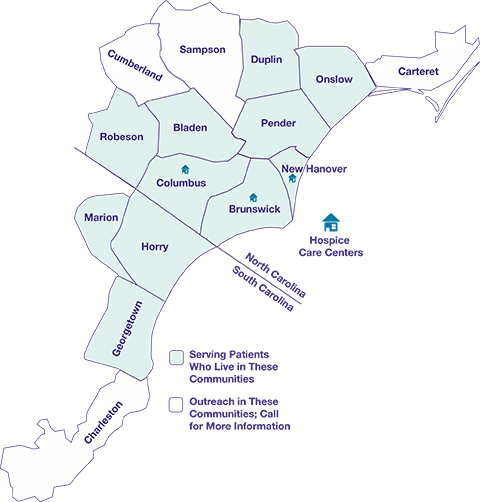Comfort Care or Hospice Care? Is There a Difference?
If you or someone you love has been diagnosed with a life-limiting or terminal illness, you may have heard the words “comfort care” and “hospice care” used a lot. But what exactly is comfort care? When can you receive it, and is it any different from hospice care?
We’ll explore the answers to these questions and provide valuable information you need to know about the hospice care team.
What is Comfort Care? Does Comfort Care Mean Death?
The term “comfort care” is often used to describe hospice care; they mean the same thing.
The term refers to the goal of care which is to keep the patient “comfortable” by managing their pain and symptoms, and relieving anxiety, to improve their quality of life.
What is the definition of Hospice?
Hospice care is for patients with a life-limiting or terminal illness when treatment is no longer an option or no longer desired, and they have a life expectancy of six months or less. Hospice care allows people to die with dignity, free of pain, surrounded by those they love.
Why Get Hospice Comfort Care?
Hospice care helps improve quality of life, not just for the patient but for the whole family. It is a whole-body approach that provides physical, emotional, and spiritual care. To accomplish this, the patient receives an interdisciplinary team (IDT) that includes a physician, nurse, nursing aide, social worker, chaplain, and volunteer(s). The level of care and support the team provides is a comfort to both patients and families.
Your Hospice Care Team Will…
- Develop a plan of care based on what’s important to the patient and their loved ones
- Meet hygiene needs to keep the patient feeling clean and comfortable
- Through regular visits, they will monitor pain levels, symptoms, and emotional and spiritual distress so that any issues can then be addressed by the team
- Provide education and information for family caregivers on their loved one’s disease
Help identify available resources to meet specific needs they may have - Offer companionship for the patient and respite for family members through a volunteer(s)
- Address anticipatory grief for patients and their loved ones
- Provide 24/7 clinical support for patients and their families – nights, weekends, holidays, whenever critical assistance is needed
Studies show that hospice patients live longer, generally, when comfort care begins early. This means more time to hold a hand, share special moments, and say “I love you.”
Unfortunately, most people wait far too long before seeking hospice care and miss out on the months of benefits it offers.
Do I Have to Go to a Hospital to Get Comfort Care?
Ninety-five percent of hospice care patients receive care where they are most comfortable – right where they live. This may be a private residence, or an assisted living or skilled nursing facility. Hospice care can also be provided in hospitals.
What is included with comfort care in the hospital or at home? If pain and symptoms can no longer be managed at home, Lower Cape Fear LifeCare patients have exclusive access to our three inpatient hospice care centers. These facilities provide around-the-clock care in a serene, home-like setting.
Is Care Expensive?
Hospice care is covered under the Medicare Hospice Benefit and provides for months of care and support. All expenses including care, medications, medical equipment, and supplies are covered by Medicare. Medicaid and most private insurances also have a hospice benefit. As a nonprofit, Lower Cape Fear Hospice never refuses anyone care based on their ability to pay.
How do I Get Comfort Care for Myself or a Loved One?
Anyone can refer someone for hospice care: a family member, friend, pastor, doctor, and even the patient themselves. Simply submit the online referral form or give us a call at 800-733-1476. We’ll answer your questions and schedule an assessment to determine if hospice care is appropriate. From there, we’ll coordinate with your doctor to get you or your loved one the care and support they need.









